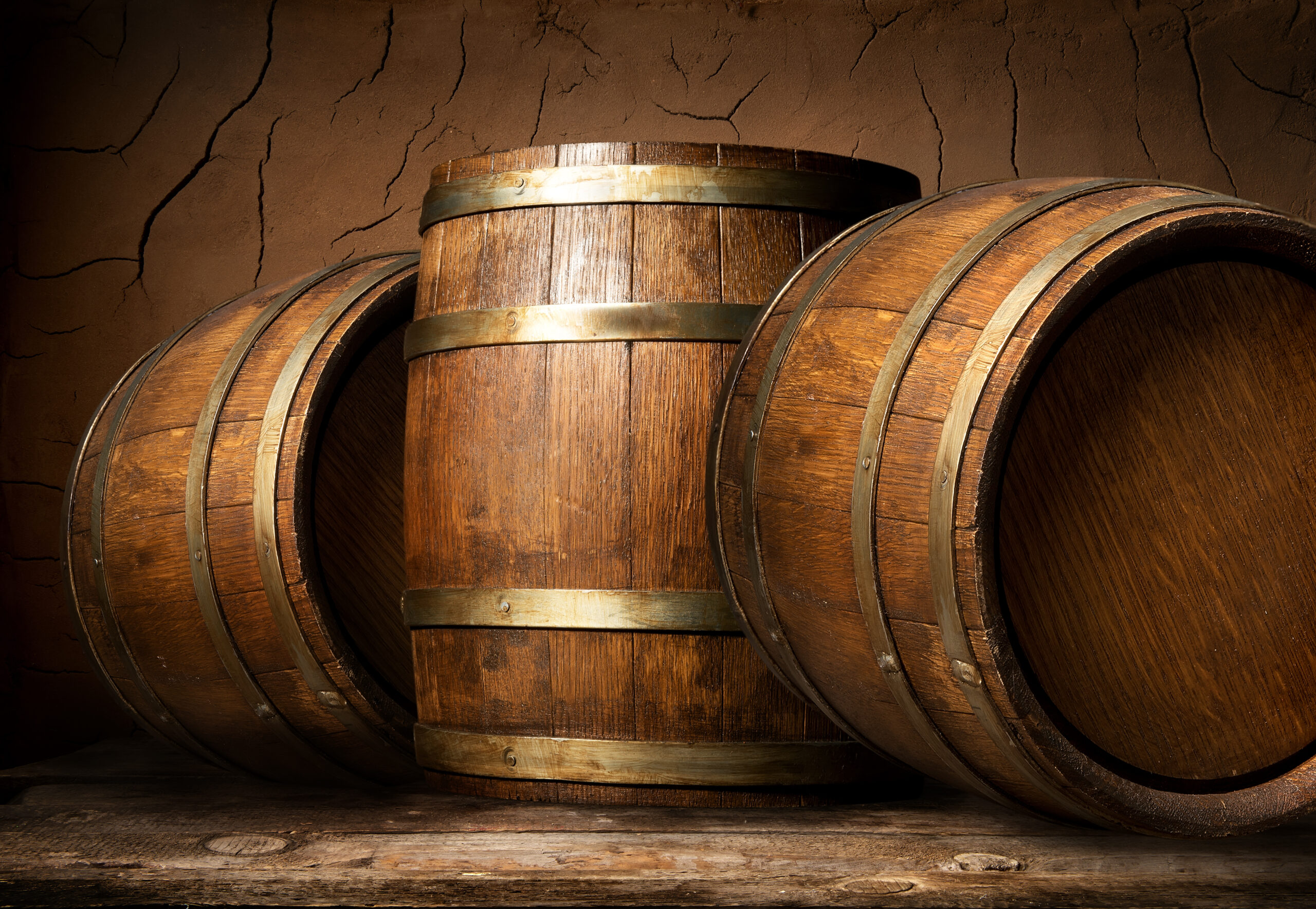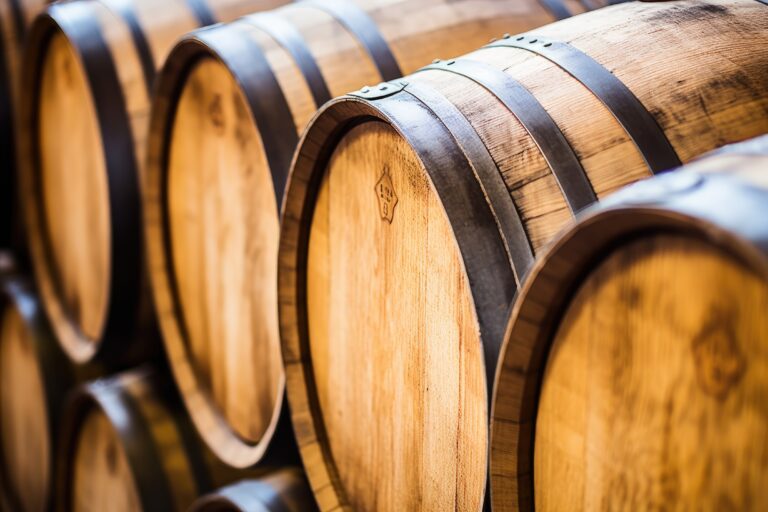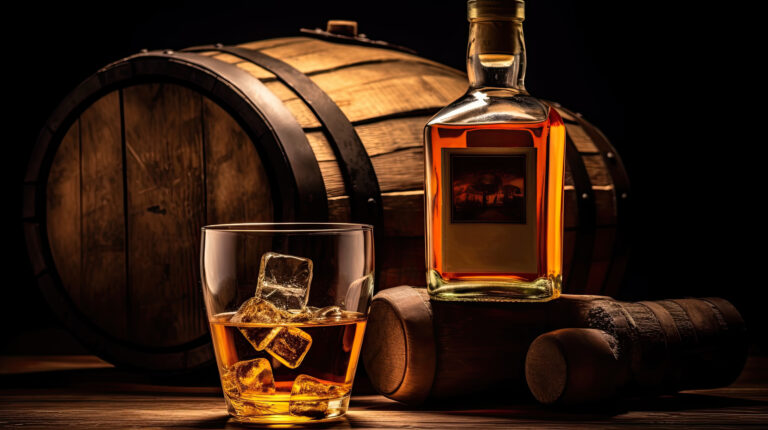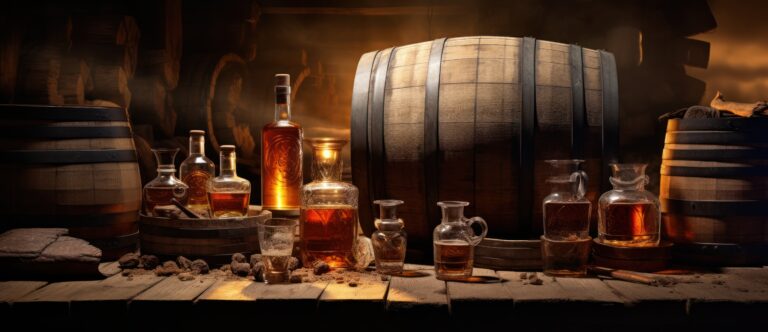Ever wonder how much whiskey can actually fit inside one of those iconic oak barrels? If you’re into whiskey, knowing the exact measurements of a standard whiskey barrel isn’t just trivia; it’s a huge part of the magic. That barrel is where a distilled spirit transforms into the delicious, amber-hued whiskey we all love. The size and shape of the barrel dramatically influence aging and flavor. Most major brands rely on a standard called the “bourbon barrel,” a size that’s been used for centuries to create that distinctive taste. Once you get the basics, you’ll have a whole new appreciation for the history, care, and craftsmanship poured into every single barrel. Let’s break down the details so you can share your whiskey wisdom with friends.
Introduction to Whiskey Barrels
A standard whiskey barrel typically holds 53 gallons, which works out to roughly 650 bottles of whiskey. While you can find barrels in different sizes, the most common ones are the standard 53-gallon and smaller 20–30-gallon barrels.
Whiskey barrels are usually crafted from American white oak, with slightly curved staves held together by metal hoops. The oak is crucial—it’s what gives the whiskey its flavor as it ages. The barrel’s classic shape, with a wider middle and narrower ends, helps with the aging process by increasing the surface area for the whiskey to interact with the wood.
As the whiskey spends years in the barrel, it absorbs the oak’s flavors of vanilla, spice, and caramel. It also extracts the oak’s color, giving aged whiskey that signature amber tint. The barrel’s size and char level—whether it’s light, medium, or heavy—also affect how quickly the whiskey ages and develops its unique flavor profile.
The whiskey barrel has been integral to creating complex, aged whiskeys for centuries. While smaller barrels are popular for home aging and experimentation, most distilleries stick with the standard 53-gallon barrel to achieve the distinct taste that only patience and time can create.
Standard Whiskey Barrel Dimensions
A standard whiskey barrel has some pretty specific measurements you should know.
Barrel Circumference
The circumference of a whiskey barrel is generally around 58 to 60 inches. This size makes it easier to handle and transport. The slightly bulging middle adds to its structural integrity.
Barrel Height
Most whiskey barrels are about 33 to 35 inches high. This compact size makes it easy to store while still holding a large volume of liquid, which is essential for proper aging. The height is also short enough for easy filling and emptying.
Barrel Bunghole
The bunghole, or opening, is typically 2 to 3 inches in diameter. This allows for filling and sampling the whiskey, but it’s small enough to help maintain the right temperature and humidity levels inside the barrel during aging.
Barrel Capacity
A standard whiskey barrel holds roughly 55 to 60 gallons of liquid. This volume is perfect for proper aging while keeping the barrel a manageable size. The large surface area of the barrel staves exposes more whiskey to the wood, which helps it absorb more flavor.
Understanding these standard whiskey barrel dimensions gives you a better sense of why these sizes are the norm and appreciate the craftsmanship that goes into making fine whiskey.
Factors Affecting Barrel Size
The size and shape of a whiskey barrel aren’t random; they depend on several key factors.
Wood Type
The type of wood used, like American white oak, plays a big role in barrel size. Oak is porous, which allows the whiskey to absorb and impart flavor. Barrels made from non-porous woods would need to be larger to achieve the same effect.
Toasting and Charring
Before a barrel is used, it’s toasted and charred, and the char level affects its size. A heavier char exposes more surface area, so less whiskey is needed to interact with the wood. A lighter char, on the other hand, would require a larger barrel.
Distiller’s Preference
Ultimately, the distiller chooses the specific size and shape of the barrels based on the flavor profile they want to achieve. Larger barrels expose less surface area, so the whiskey absorbs less wood flavor. The distiller has to consider this, along with the type of whiskey and the desired aging time.
Industry Standards
The whiskey industry has adopted some standard sizes, like the 53-gallon bourbon barrel. While this provides consistency, some distillers might prefer smaller or larger barrels to create a unique product.
In the end, it’s a balance of all these factors—wood type, char level, distiller goals, and tradition—that determines how much whiskey a barrel will hold. But no matter the size, the interaction between the whiskey and the wood is what creates that distinctive flavor we all know and love.
How Barrel Size Impacts Whiskey Aging
The size of a whiskey barrel has a direct and major impact on how the spirit ages and develops its flavor. Larger barrels, like those used for bourbon, expose more of the whiskey’s surface area to oxygen, which allows for quicker aging.
Smaller Barrels
Small barrels, which are usually 5 to 30 gallons, age whiskey much faster because of the increased wood-to-whiskey ratio. The whiskey is in close contact with the wood, absorbing more flavors in less time. In just 6-12 months, it can develop rich notes of vanilla, caramel, and spice. These smaller barrels are often used by craft distillers for quick, limited releases.
A word of caution: if left for too long, whiskey in smaller barrels can become “over-oaked,” leading to harsh, bitter flavors. For the best results, it should be moved to larger barrels to continue aging at a slower pace.
Larger Barrels
Larger barrels, like the 53-gallon bourbon barrel, age whiskey more slowly. It can take years, not months, for the whiskey to fully absorb the barrel flavors and develop its complex notes. This longer aging process results in a smoother, more mellow whiskey.
The barrel’s size, along with other factors like barrel char, warehouse conditions, and the whiskey’s chemistry, all work together to determine the final taste of your favorite dram. Understanding these variables gives you a true appreciation for why certain whiskeys taste the way they do.
Popular Whiskey Barrel Sizes
The most common whiskey barrel sizes are the standard barrel, hogshead, puncheon, butt, and tun.
- A standard barrel holds roughly 53 gallons or 200 liters of whiskey. This is the most popular size for aging and bottling bourbon and other whiskeys.
- A hogshead barrel is a bit bigger at 63.5 gallons or 242 liters and is often used for Scotch whisky.
- Puncheons hold 84 gallons or 318 liters and are used for longer aging of certain whiskey styles.
- Butts contain 108 gallons or 409 liters. They are the largest type of cask commonly used in whiskey making.
- Tuns are massive at 252 gallons or 954 liters. Only a few distilleries use these today, and it’s mostly for experimental, ultra-long aging.
The specific barrel size, along with the type of wood (like American white oak or European oak), and other factors like warehouse location, all influence how a whiskey ages and develops flavor. The ratio of a barrel’s surface area to the volume of whiskey is key, as more exposure to the wood means faster aging.
How to Measure a Whiskey Barrel
To get an accurate measurement of a whiskey barrel, you’ll need a few basic tools: a measuring tape, a level, and a permanent marker.
Measure the Diameter
First, measure the diameter of the barrel. Wrap your measuring tape around the center to get its circumference. Then, divide that number by 3.14 to calculate the diameter in inches.
Measure the Staves
Next, measure the width of one of the staves—the curved wooden planks that make up the barrel’s sides. Place the end of your measuring tape at the edge of the stave where it meets the head (the top or bottom) and run it along the stave to the bilge (the bulging middle part). Repeat this for each stave and calculate the average width.
Check for Level
Place a level across the head to make sure the barrel is sitting evenly. An unleveled barrel won’t give you accurate measurements and won’t age whiskey properly.
Calculate Volume
Finally, use your measurements to calculate the barrel’s volume in liters. The formula is: Volume (liters) = (Stave width (inches) x Diameter (inches) squared x 0.7854) / 231
Once you’re done, mark your barrel with its measurements and volume so you have a quick reference for the future. With the right care and maintenance, a whiskey barrel can last for decades, and measuring it correctly is the first step to ensuring it has a long, productive life.
Tips for Storing Whiskey Barrels
Properly storing your whiskey barrels is crucial for maintaining the quality and flavor of your whiskey. Here are a few tips to keep in mind:
Temperature
Aim for a cool, stable temperature. The ideal range is between 45°F and 65°F. Wild temperature swings or overly warm conditions can speed up aging and give the whiskey unpleasant flavors. The cooler the temperature, the slower the aging.
Humidity
Whiskey barrels need moisture in the air to prevent the wood from drying out and shrinking. A relative humidity of 65–85% is recommended. Use a hygrometer to monitor the humidity and adjust as needed.
Ventilation
Some airflow is necessary for the aging process, but too much can cause excessive evaporation. Choose a location with moderate airflow and avoid placing barrels near heating or cooling vents.
Lighting
Minimize light exposure as much as possible. UV and harsh lights can break down compounds in the whiskey, altering its flavor and aroma. Store barrels in a dark room away from windows.
Positioning
For the best results, store barrels on their sides. This ensures the maximum surface area of the barrel is in contact with the whiskey. Storing them upright can cause the staves to dry out and the barrel to leak. Rotate the barrels a quarter turn every 6-12 months to ensure even aging.
Following these tips will help you create the ideal environment for storing your whiskey barrels. Be patient through the aging process; the rewards of your well-made and properly cared for whiskey will be well worth it!
Common Uses for Used Whiskey Barrels
Once whiskey has been aged and bottled, the barrels are often sold off. But don’t be fooled—used whiskey barrels still have a lot of life left in them.
Aging Other Spirits
Bourbon barrels are frequently used to age other spirits like rum, brandy, or tequila. The leftover whiskey flavors absorbed by the wood add layers of complexity to the new spirit. Some distilleries even produce bourbon just so they can sell the barrels for aging other spirits.
Aging Beer
Craft brewers often age beer in used whiskey barrels to create “bourbon barrel-aged beers.” The whiskey flavors permeate the wood and infuse the aging beer. Stouts, barleywines, and other full-flavored beers pair especially well with bourbon barrel aging.
Furniture
The oak from these barrels is high-quality and highly sought after by woodworkers and furniture makers. Barrels can be crafted into chairs, tables, cabinets, and more. The wood’s natural curves and the metal barrel rings are often incorporated into the designs.
Decor
Used barrels have a great rustic appeal for home decor. They are repurposed as end tables, planters, trash cans, and candle holders. The aged wood and patina give barrels a vintage look that works with many decorating styles.
Mulch and Compost
When the barrels finally reach the end of their lifespan, the oak staves and metal rings can be recycled. The staves are shredded into mulch or compost, and the rings are collected for scrap metal. Almost the entire barrel gets reused, so nothing goes to waste.
FAQ: Answering Common Whiskey Barrel Measurement Questions
Do Whiskey Barrel Sizes Vary?
Yes, whiskey barrels come in a range of sizes. The most common are standard barrels (also called hogsheads), which hold 53 gallons or 200 liters. Smaller quarter casks hold around 25 gallons, while larger barrels like puncheons can hold 80–132 gallons.
How Big is a Standard Whiskey Barrel?
A standard U.S. whiskey barrel (also called a hogshead) holds 53 gallons or 200 liters. It’s usually about 34 inches high and 24 inches in diameter.
What Are the Dimensions of a Whiskey Barrel?
Standard 53-gallon whiskey barrels typically measure around 34 inches high and 24 inches in diameter. The actual volume inside the barrel is a little less, at around 50–52 gallons, to account for the thickness of the wooden staves.
Are All Whiskey Barrels the Same Size?
No, whiskey barrels come in various sizes, from small quarter casks to large puncheons. The most common size is the standard 53-gallon barrel, but some distillers use smaller and larger barrels. Barrel size directly impacts how quickly the whiskey ages and absorbs flavors from the wood.
How Much Whiskey Does a Standard Barrel Hold?
A standard U.S. whiskey barrel, also known as a hogshead, holds 53 gallons or roughly 200 liters of whiskey. The actual amount that goes into a new barrel is usually a bit less, around 50–52 gallons, to account for evaporation during aging.
In short, while whiskey barrel sizes can vary, a standard U.S. whiskey barrel or hogshead holds 53 gallons or about 200 liters. Its dimensions are typically around 34 inches high and 24 inches wide, with an interior volume of about 50–52 gallons. But keep in mind that some distillers use a variety of barrel sizes to age their whiskey.
Final Thoughts
There you have it—your quick guide to understanding whiskey barrel measurements. Now you can impress your friends with your newfound knowledge about hogsheads, butts, and puncheons. But more importantly, the next time you’re at a whiskey bar or a distillery gift shop, you’ll be able to decode all those numbers on the barrel heads and bottles. You’ll know exactly how much whiskey is in that bottle or cask and have a better sense of how long it’s been aged based on the barrel size. Understanding these details helps you become a more informed whiskey consumer and develop a deeper appreciation for the craft and care that goes into making fine aged spirits.
The next round is on you—cheers!







